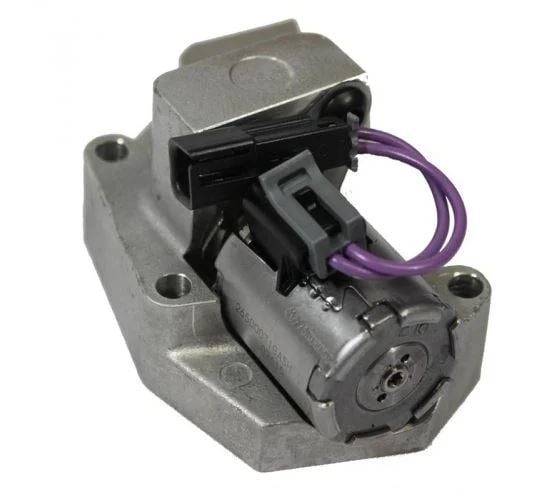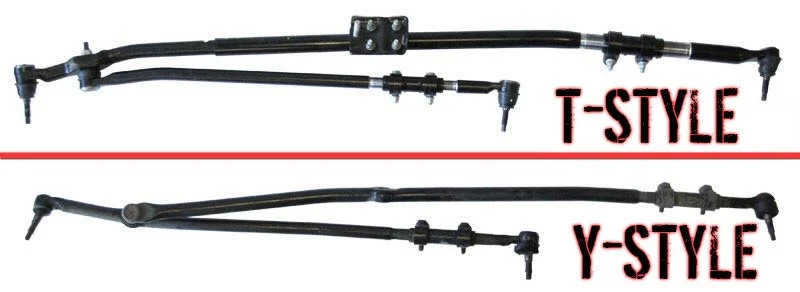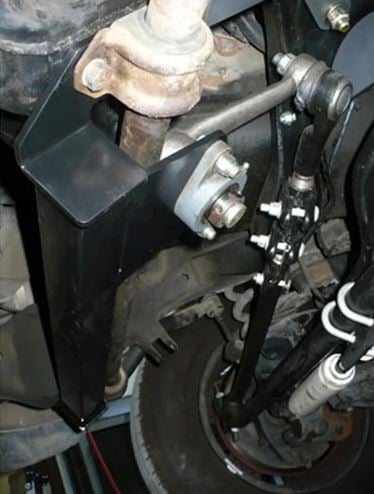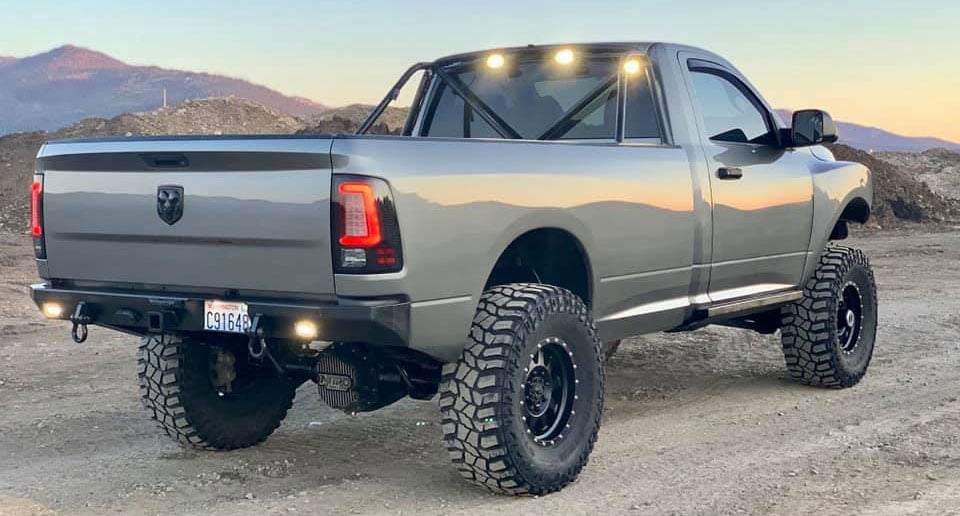The diesel pickup with the most loyal fanbase has to be the Ram 2500 or 3500. In fact, the owners often refer to their truck simply as a Cummins rather than a Dodge or a Ram because of the legacy and heritage that comes with the inline diesel engine. They’ve been made since the late 80s, when GM and Ford still hadn’t quite figured out their diesel program, and since then, the legendary inline six has powered millions of trucks and hauled countless tons of freight around the country. Other than ones that have rusted out or been wrecked, most of the Cummins powered Rams are still on the road today commanding higher prices than ever on the used market, since the power and reliability of the 5.9 or 6.7 diesel is second to none.
Despite the engine’s rock-solid reputation, the pickups they were installed in have been known to have the occasional flaw, so to get the most out of the engine, you will be required to invest a little time and money into the truck in a few key areas. Don’t worry though, there are quite a few upgrades you can do that won’t break the bank, and today that’s what we’re focusing on: simple and cost-effective upgrades for your Cummins powered Ram that will help keep it on the road for the long haul.
Automatic Transmission Issues
The most powerful and reliable engine in the world won’t do you much good unless it’s paired up with a transmission that can transfer all that power and torque to the wheels. Sadly, it seems Chrysler had a hard time building an automatic transmission that could match the torque of the Cummins, so the first of our improvements have to do with improving some design flaws. If you own a Cummins powered Ram, odds are pretty high you’ll need to rebuild and upgrade the transmission sooner or later, especially if you’ve added any extra horsepower, and while these parts aren’t a substitute for a beefed-up transmission, they are fixes for some very common problems known to plague the Chrysler transmissions.
Inside the 1996 to 2007 47RE and 48RE sits a small electronic solenoid responsible for regulating transmission pressure and controlling the shifts. The Governor Pressure Solenoid chosen by Chrysler is an inexpensive and problematic part, and when it fails, you will notice delayed or no upshifts, no downshifts, or erratic shifting. To solve the issue, you could buy a new one from Chrysler, but that won’t solve the design flaw. An actual solution is to replace it with a GM solenoid which is larger and stronger, and much better at managing high pressure hydraulic fluid. While the GM solenoid is not a direct plug-and-play replacement for the Chrysler version, with some help from ATS Diesel and their GM Governor Pressure Solenoid Conversion you can easily restore the shifting of your 47 or 48RE. The kit includes a small hydraulic block that mounts the solenoid in the correct fluid circuit, as well as a short wiring harness adapter which means no splicing wires and code free operation.

Right next to the governor solenoid in the 47/48RE sits another vital component that often fails, and that’s the pressure transducer. Chrysler selected a plastic sensor to be used inside the transmission, and it reports fluid pressure and temperature back to the computer, and as you might expect, the plastic sensor is also prone to failure, especially when used with an upgraded transmission that runs higher hydraulic pressure than stock. When it does go out, you will experience symptoms very similar to a failed Governor, so while you’re in there installing the ATS Solenoid, it makes sense to ditch the stock plastic sensor at the same time in favor of a BD Diesel Pressure Transducer Upgrade Kit. The plastic sensor is replaced with a much stronger metal pressure transducer that will withstand elevated line pressure and higher temperatures. It also comes with a plug and play adapter that has a built-in circuit to prevent fault codes if you are running a higher than stock line pressure.
Manual Transmission Fixes
Out of all the diesel pickups built, Dodge used a manual transmission more than anyone else, and owners who tow and haul with their truck love shifting their own gears, and in terms of sheer strength, the manual was leaps and bounds ahead of any automatic Dodge used. The earliest models came with a 5-speed manual; first the Getrag G360, and then the New Venture NV4500, but in halfway through 1998 the switch was made to a 6-speed manual. The NV5600 6-speed was by far a crowd favorite since it was nearly indestructible, but a few years later that was traded for a Mercedes-Benz sourced G56 6-speed. Each of the transmissions can handle a lot of abuse, but the clutch that links the engine to the transmission is the weak link. Regardless of which manual you have, you will likely experience a clutch failure at some point, whether that’s from normal mileage or simply from overpowering the clutch while towing, and when it does, for the love of God, don’t put a stock clutch back in.
South Bend has a clutch that will work for any transmission and application, but in order to provide the proper driving characteristics, its critical you choose the correct one for your needs. You can “over clutch” and have a truck that’s unbearable to drive on the street with too aggressive engagement, or you can “under clutch” and have something that just slips whenever you try to accelerate. Probably the most popular option from South Bend is the Street Dual Disc clutch. Because it uses two friction discs rather than only one, the holding power is doubled while still providing smooth engagement and near stock pedal feel. The Street Dual clutch uses one organic disc which helps smooth engagement and one ceramic disc which is a lot grippier, and together the pair can hold 650 horsepower, 1,300lb.ft. of torque, and is rated to tow 30,000 pounds. This makes the Street Dual Disc clutch a great option for just about everyone, but if you have a competition truck that makes way more than 650hp, if you sled pull, or if you just have a stock engine, South Bend makes a clutch that will work with your Cummins.
South Bend also makes a heavy duty replacement for your entire clutch hydraulic system, and it includes the master cylinder on the firewall, the lines, and the slave cylinder on the transmission which together will give you easier pedal effort and the travel required to properly disengage your new clutch, which is especially important on a G56. When you eliminate the problematic dual-mass flywheel on a G56 and install a clutch with a solid flywheel, the overall thickness of the clutch package changes, and the stock hydraulics are no longer compatible. The South Bend clutch hydraulics are designed to work with their clutch, so with just a few more steps, your new clutch will operate better than ever.
Chassis Fixes
Probably one of the scariest things you will experience while driving a 2nd or 3rd gen Ram is death wobble. As its name suggests, death wobble is a phenomenon that can scare you half to death when the steering wheel starts jumping back and forth uncontrollably as you drive at high speeds, and thankfully it’s something you can fix without spending tons of money. There are several contributors, but the root cause for them all is play in your steering and suspension components. On the ‘94 to ‘08 trucks, a “Y” style of steering linkage was used where there is no solid tie rod that connects each steering knuckle to the other. When the joints wear out, the excessive play can cause death wobble, but the design does have some inherent flaws which were corrected midway through 2008 when Ram switched to a “T” style of steering.

You can kill two birds with one stone by upgrading your “Y” steering with a Synergy Manufacturing Heavy Duty Steering Kit. First you can replace your worn-out tie rods drag link which will help eliminate some of the play that causes death wobble, but second, it converts to the updated “T” style steering which eliminates toe change during suspension travel. The tie rod ends in the Synergy kit come with special low-misalignment wobble-stoppers which prevent the tie rod from twisting as the steering force is applied, and the linkage is made from 1-1/2” diameter 0.250” wall tube for unsurpassed strength. The Synergy tie rod and drag link also uses a double adjuster sleeve so alignment changes can be made without having to remove the tie rod end from the knuckle or pitman arm. The Synergy steering kit is also designed to work with lifts up to 6” without requiring a dropped pitman arm.
Speaking of lifted trucks, many Rams have been lifted but are still running stock control arms, and this causes the axle to move further toward the rear of the wheel opening, and often times, the larger tires will rub the body or the control arms. Rather than getting the Sawzall or sledgehammer out and attaching the body work, a proper fix and upgrade for your Ram would be some Carli extended control arms. They are half an inch longer than stock, which will push your front axle back into its original position, but they’re also way stronger. They are constructed of 0.120” wall square steel tube, and instead of the weak rubber bushings Dodge chose, Carli uses a chromoly ball joint with a polyurethane isolator which gives a smoother and more precise ride, and finally the tube of the control arm is offset toward the center of the truck which gives extra tire clearance to prevent rubbing at full lock.

Preventing death wobble is all about ensuring your suspension parts stay where they’re supposed to be, so a lot of the fixes like the Synergy tie rods and Carli control arms revolve around eliminating flex and free play. There is a lot of force going through the steering box when turning, and if you have larger tires and a lift kit, the steering box can flex and move on its mount. By reinforcing the sector shaft with a BD Steering Box Stabilizer, the steering box will no longer be allowed flex and twist, and all the steering force is transmitted into the drag link which means much more precise steering and no wandering.
Cylinder Head Improvements
Now that we have a truck that will drive straight down the road without killing you, there are some reliability upgrades you may want to explore that will help your Cummins last longer and hold more power at the same time. Let’s face it: your truck is going to be tuned at some point if it’s not already, and if there is one downfall to a Cummins engine making more horsepower, it would be in the cylinder head.
A diesel engine produces immense pressures inside its cylinders, and the head gasket is responsible for holding that pressure inside the engine. The head bolts keep the head clamped tightly to the block compressing the gasket, but when you are running more power than stock, the bolts can be stretched slightly and the head will lift away from the block, which means the gasket can no longer do its job. If you have a newer truck with low miles on it, you can get away with installing ARP head studs one at a time in place of the stock bolts, but if your truck has more miles on it or its been tuned for a while, it is a smarter move to bite the bullet, remove the head, have it resurfaced, clean the deck of the block, and install a new head gasket and studs at the same time with a kit from Alliant Power. This will refresh the sealing surface that might’ve been compromised due to a lifted head, and the included ARP studs will keep the head firmly planted onto the new gasket and hold all the horsepower inside the engine where it belongs. To make your install easier and eliminate trips to the parts store, the kit also comes with every small gasket and seal you’ll need to complete the job.
“While you’re in there” can be one of the most dangerous phrases when talking about an automotive project since the snowball effect can take over, but if you are working on a tuned Cummins and have the head off, it only makes sense to upgrade the valve springs. The stock springs work well on a stock engine, but not when you are increasing boost pressure and engine speed. At higher RPM they won’t be able to close the valves quickly enough, and at high boost, the air pressure on the back of the valve can actually “blow open” the valve by overcoming the spring’s pressure. A simple fix is to install some Hamilton valve springs. If you have a 5.9 or 6.7 24-valve made between 98.5 and 2018, the 103lb valve springs are what you need. They will keep the valves where they belong even at elevated boost pressures and higher RPM, which means no valve float, no damage to your valvetrain, and by keeping the valves opening and closing on time, it can lead to an increase in horsepower as well.
More Power Baby
Most Cummins owners will already have the basic performance mods like a cold air intake, free flow exhaust, and a programmer, but if not, that’s a great place to start now that you have a rock-solid engine, chassis, and transmission. But once the basics are complete, where do you turn if you still need more ponies? Injectors and turbos can be a little on the pricey side, but affordable gains can still be found.
Remember, airflow is the name of the game, and if you have a P-pumped 12 valve, one area to look for gains is the intake manifold. Because the stock inlet is on the front of the cylinder head (and very restrictive), overall airflow is limited, but also unevenly distributed. Cylinders 2, 3, and 4 get the most air, but cylinders 1, 5, and 6 are starved and will run a little richer and hotter than the rest. An inexpensive and easy cure to this is installing the Banks Twin Ram Intake Manifold which adds another inlet on the rear of the cylinder head. This effectively doubles the airflow area into the cylinder head which increases horsepower on all cylinders, but more importantly makes each cylinder receive equal amounts of air. As a result, you will see improved fuel efficiency, reduced emissions, and of course more horsepower.
One last problem that can be solved while improving airflow and horsepower on any Cummins is the exhaust manifold. The stock one-piece design is restrictive in nature, and because of thermal cycling, over time the original manifold can crack, causing an exhaust leak and loss of exhaust energy to drive the turbocharger. An upgrade that will work with your stock turbocharger is the ATS Diesel Pulse Flow Exhaust Manifold. They offer a direct replacement for 12 and 24 valve models, but they have been re-engineered to have larger internal passageways for better exhaust flow and quicker turbo spool up. To prevent stress cracks, the Pulse Flow manifold is a multi-piece design with slip couplings in the middle that will allow the manifold to grow and shrink as it heats and cools without cracking. 1994 to 2002 second-gen trucks get a three-piece manifold, and 2003 and newer common rail trucks get a two-piece design, and both offer increased reliability over stock. Best of all, because it uses a stock position and sized flange, you can easily pair the ATS manifold with numerous upgraded turbos on the market, such as the Fleece Cheetah turbo for an even bigger bump in power.
Keep Your Ram Rolling
Dodge hit the jackpot when they partnered up with Cummins, but sadly the rest of the powertrain just wasn’t quite as durable as the inline six. It does take some investment in parts and labor to keep any older truck on the road, but if you spend wisely and turn the wrenches yourself, you can give your Ram a new lease on life, fix some dangerous problems, and improve its power without investing a ton of money. Sounds like a win-win to me.


What rear bumper is that?